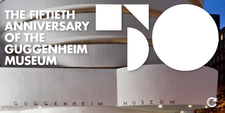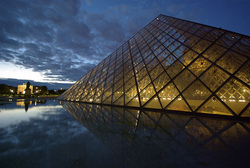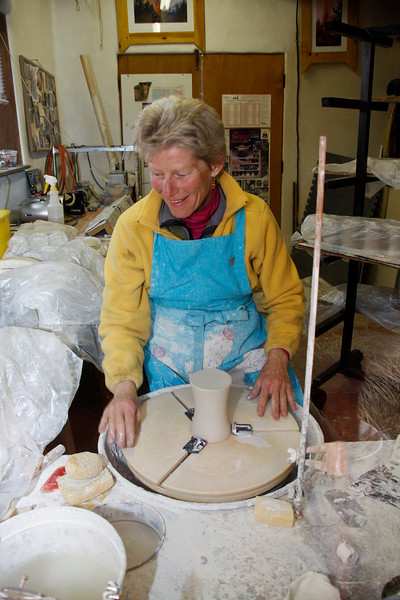When a group with whom I was traveling entered the Museum of Anatolian Civilizations in Ankara , Turkey, they headed for the Mother Goddess exhibit. Even hearing the word “mother” makes me tense; mine was good at making apple pie but never learned the recipe for loving and nurturing, associated in most people’s minds with the way a mother ought to be.
All in Art and Culture
Searching for Shakespeare
Venice. I was waiting for a traghetto gondola to ferry me across the Grand Canal when I spied a building plaque indicating that the palazzo in front of me was the home of Desdemona, the tragic heroine of Shakespeare’s “Othello.” I didn’t have time to check it out on that trip, but it fired my imagination and I did some research. Desdemona’s home is traditionally set at Palazzo Contarini Fasan, a private home, but now I must go back to see what I can of this home with the plaque. I’ve already been to the Doge’s Palace on Saint Mark’s Square, the Rialto Bridge and the Jewish Ghetto to breathe in the scenes of “The Merchant of Venice.”
by Katya Miller
The Hamsa caught my eye early in my formative years as a jeweler, symbolist, and amulet maker. It was much more exotic than the Star of David that represented Judaism. It evoked a middle eastern world of colorful clothing, sacred architecture and the three faiths of Jerusalem, but I didn’t understand how it related to my own beliefs. I knew it was an abstract hand shape, inverted with thumb and pinky pointing outward and similar to the many such indigeneous hand designs in cultures worldwide.
 The Khamsa, (in Arabic: Khamsa means “five”) is an icon in amulets, charms, and jewelry, to protect against bad eyes. The Islamic name for the charm is the Hand of Fatima or Eye of Fatima, referring to Fatima Al-Zahra'a, Prophet Muhammad’s small and most beloved daughter. She married Ali, the son of Abu Taleb who was especially loved by Mohammad as the first one who accepted him. Only from her Mohammed had grandchildren and all of her sons were important leaders. She is very important in the Shiite Islam and there only her descendants can be Khalifs. Many girls are named Fatima, meaning a rose, considered holy. She must have had healing hands.
The Khamsa, (in Arabic: Khamsa means “five”) is an icon in amulets, charms, and jewelry, to protect against bad eyes. The Islamic name for the charm is the Hand of Fatima or Eye of Fatima, referring to Fatima Al-Zahra'a, Prophet Muhammad’s small and most beloved daughter. She married Ali, the son of Abu Taleb who was especially loved by Mohammad as the first one who accepted him. Only from her Mohammed had grandchildren and all of her sons were important leaders. She is very important in the Shiite Islam and there only her descendants can be Khalifs. Many girls are named Fatima, meaning a rose, considered holy. She must have had healing hands.
An alternative Jewish name is the Hand of Miriam, in reference to Miriam, the sister of Moses and Aaron. It is a kind of "protecting hand" or "hand of God". The Jewish silversmiths who lived and worked in Morocco and other Arab countries before settling in Israel, adapted it as their own symbol over the years and sometimes put a six pointed star in the palm for religious identity. With an eye in the palm, they say it protects against “the evil eye.” Some associate the significance of the five fingers to the five books of the Torah for Jews, the Five Pillars of Islam for Sunnis, or the five People of the Cloak for Shi'ites. It can be seen all over the Arab nations, and is popular as charms and decorations in Israel’s markets as wall plaques, mobiles, keychains and necklaces. Among Jews, many hamsas are also decorated with fish images, considered to be a symbol of good luck and sometimes they are inscribed with Hebrew prayers, such as the Sh'ma, the Birkat HaBayit (Blessing for the Home), or the Tefilat HaDerech (Traveler's Prayer).
 They were meant to be together so when I learned that the Guggenheim Museum was celebrating the 50th anniversary of its landmark building with an in-depth retrospective of the Russian avant-garde artist Wasilly Kandinsky, I knew I had to go.
They were meant to be together so when I learned that the Guggenheim Museum was celebrating the 50th anniversary of its landmark building with an in-depth retrospective of the Russian avant-garde artist Wasilly Kandinsky, I knew I had to go.
“The Angel in The Architecture,” trumpeted The New York Times headline for the review of the Guggenheim show, which runs through January 10. Frank Lloyd Wright designed the building especially for the museum’s founding collection of Kandinsky’s non-objective work.
I drove into New York City from Boston -- a tactic I do not recommend. And, speaking of angels, one must have been watching over me because I found a parking space within walking distance of the museum. Easy, right? Nope. I had a problem with the parking meter, a style that was new to me. Directions said it took credit cards, but when I slipped my Visa card into the slot and punched in the length of time I expected to be gone, nothing happened. I tried to remove my card from the slot to try again. The parking meter held the card in a vise-like grip.
A father with a curly-headed toddler in hand saw my predicament. He forcefully yanked my credit card from the machine and counted four quarters into my palm. “It’s easier with coins,” he said.
“Thanks,” I said, handing back his change. I certainly appreciated this random act of kindness, but I already had quarters.
“Keep it,” he insisted. “You may need it later.”
I thought about his kindess as I approached the Guggenheim.
by Judith Fein
When I travel, one of my guilty pleasures is attending master classes. Sometimes I’ll catch an artist who can change young painters’ lives with the flick of a brush. Other times a famous violinist will teach a technically proficient young musician how to bow with more passion, and the latter’s playing transforms before my eyes. This past weekend, there was a master class in my hometown and I dropped everything to attend.
Photo Slide Show by Paul Ross
If there is a dancer with larger shoulders, bigger blue eyes and a closer tie to Bob Fosse, I don’t know who she is. Ann Reinking was in Santa Fe, teaching a master class to excited teens and helping to stir up interest in the New Mexico School for the Performing Arts, which will open in Fall 2010. At one moment, I thought I felt a strange breeze blowing through the Dance Barn where the class took place. It was probably the spirit of Fosse himself, conjured by his illustrious star and ex-partner.
Reinking’s best-known performances include Goodbye Charly, Dancin’, Chicago, A Chorus Line, Sweet Charity and, of course, All That Jazz, which was a fictionalized account of her relationship with the brilliant, chain-smoking, overworked, burned-out, womanizing Fosse. If you haven’t seen the latter, stop reading and go rent the DVD or place your order with Netflix.
On a recent trip to Paris to visit a dear friend, I learned an insider’s tip: the Louvre is open Wednesday and Friday nights until 10 pm. Also, it’s a local tradition to use museums as classrooms, so art students are welcome to sit among the treasures studying, drawing, painting, gaping. My friend and I are both art students so we leapt at the chance. While others were feasting on foie gras, we’d be feasting on world-class art. photo by Robert S. Donovan via flickr The first Wednesday night we packed our drawing pads, pastels and pencils and headed across the Seine to the Louvre, eager for this special treat. “Let’s start with classical Greek and Roman statues,” my friend suggested. “I’m a beginner, we need easier forms for me,” I lobbied. We climbed the stairs past the Winged Victory of Samothrace statue and passed through glorious halls filled with Italian paintings. We saw the crowds in front of La Joconde – the Mona Lisa – and Da Vinci’s Madonna of the Rocks (famous to Da Vinci Code readers), but we weren’t seduced. It felt liberating to give up trying to take in as much as possible to concentrate on a few pieces.
photo by Robert S. Donovan via flickr The first Wednesday night we packed our drawing pads, pastels and pencils and headed across the Seine to the Louvre, eager for this special treat. “Let’s start with classical Greek and Roman statues,” my friend suggested. “I’m a beginner, we need easier forms for me,” I lobbied. We climbed the stairs past the Winged Victory of Samothrace statue and passed through glorious halls filled with Italian paintings. We saw the crowds in front of La Joconde – the Mona Lisa – and Da Vinci’s Madonna of the Rocks (famous to Da Vinci Code readers), but we weren’t seduced. It felt liberating to give up trying to take in as much as possible to concentrate on a few pieces.
In a remote corner of the museum, we saw the perfect models – 200-400 year old wooden sculptures from Oceania. Most of the totem figures I drew were from Vanuatu and were basic shapes fun to study. They were male figures, between five and seven feet tall; some were painted, some were streamlined to the essence like Brancusi sculptures, and some were very detailed with carvings. I worked longest with a sculpture of a seated man and woman, arms and legs entwined, which once guarded the entrance of a ceremonial house in the Solomon Islands. Their figures, pedestal and head covers were all carved out of one tree. My friend drew a very detailed study of an unusual and complex hermaphrodite figure, with a crested headdress, that looked warlike and powerful.

